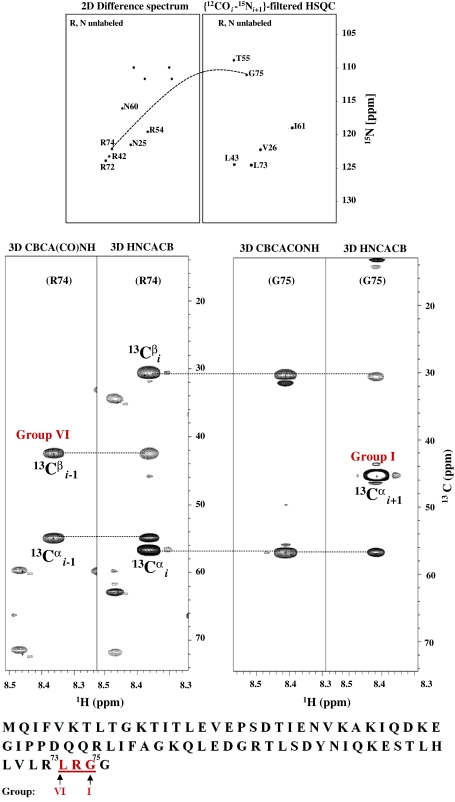Fig. 6.
Illustration of sequence specific resonance assignment of a tri-peptide segment in Ubiquitin. Given a peak in the 2D difference spectrum of (R, N) selectively unlabeled sample, (e.g., R74), its C-terminal neighbour (i + 1) is identified using the procedure shown in Fig. 4 and its amino acid type (indicated as group I) is assigned using 13Cα and 13Cβ chemical shift based classification described in Fig. 1. The amino acid type of residue i − 1 (indicated as group VI) is assigned like-wise from 3D CBCA(CO)NH and the tri-peptide segment is then mapped on to the protein sequence shown for sequence specific assignments

